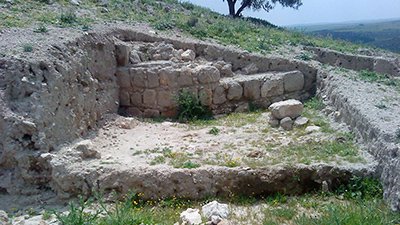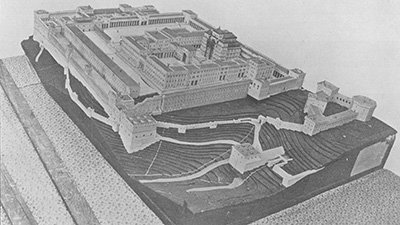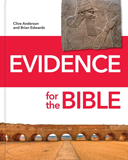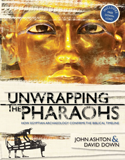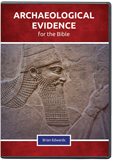
Recent Archaeological Finds in Assyria Corroborate Scripture
In 2014, the Islamic terrorist group ISIS regained control of parts of Iraq, including all of Mosul, where the ancient city of Nineveh, the capital of Assyria was located. For the three years they retained control over this area, they initiated a campaign of cultural destruction, destroying several mosques and tombs (including one on July 24, 2014, which is traditionally believed by Muslims and some Christians1 to be the tomb of the prophet Jonah2). Believing the shrines within these mosques and tombs to be contrary or corrupt according to their strict interpretation of Islam, these types of sites were demolished. In late January of 2017, when ISIS was defeated, Mosul and surrounding areas were recaptured by the Iraqi army.
The Bloody City
Nineveh (representing the nation of Assyria) is mentioned frequently in Scripture, as both the enemy and conqueror of the northern kingdom of Israel and harasser of the kingdom of Judah; but also as the nation which repented en masse at the preaching of Jonah. Then apparently the Ninevites reverted to idolatry, as later prophets (like Nahum) excoriated them and predicted the destruction of the city of Nineveh and the Assyrian empire. Several of the Assyrian kings are also mentioned, usually in conjunction with their dealings with either Israel or Judah during the Divided Monarchy.
In a recent article3 in Iraq magazine (an archaeology journal published by Cambridge University), the author, Dr. Ali Yaseen Al-Juboori, looked at a number of inscriptions and artifacts from digs conducted in Nineveh, some from 1987–1992 that have yet to be published. Other artifacts and inscriptions were recently discovered as a result of tunnels that were dug by ISIS probably looking for buried Assyrian treasures or artifacts,4 which could be sold on the black market to fund their terrorist organization. Ironically the digs conducted in 1987–1992 at Nebi Yunus and the Nergal Gate, though productive, were stopped for fear of potentially damaging the mosque and traditional tomb of Jonah. But ISIS had no such compunctions and actually dug deeper into areas that would have been inaccessible to Iraqi and foreign national archaeologists.
With the recapture of the city in January of 2017, archaeologists began looking at sites to see what had been demolished or looted. To their surprise, they found a number of tunnels. Although it is certain that some things were looted and other items were broken or damaged, many items had been left untouched by ISIS, because they were deemed nonvaluable and also of little importance (and thus perhaps considered inoffensive). Some of the most important finds, discussed in this journal paper, were inscriptions made by Assyrian kings. The author examined these new finds in March 2017 and reviewed similar inscriptions that were uncovered (but unpublished) in the 1987–1992 digs. We will cover a few of the translated inscriptions below, especially those that touch on biblical history and events.
The Writing on the Walls
Several of the newly discovered inscriptions as well as the ones from 1987–1992 were found on wall panels, and others were found on statues and pillars (or colossi). The author’s English translations from the Assyrian language are below.
The palace of Esarhaddon, great king, mighty king, king of the world, king of Assyria, governor
of Babylon, king of Sumer and Akkad, son of Sennacherib, king of the world, king of Assyria,
descendant of Sargon (II), king of the world, king of Assyria.
The palace of Esarhaddon, great king, mighty king, king of the world, king of Assyria,
governor of Babylon, king of Sumer and Akkad; the one who (re)constructed the temple of
the god Aššur, (re)built Esagil and Babylon, (and) renewed the statues of the great gods; son
of Sennacherib, king of the world, king of Assyria, descendant of Sargon (II), king of the
world, king of Assyria.
The palace of Esarhaddon, strong king, king of the world, king of Assyria, governor of Babylon,
king of Sumer and Akkad, king of the kings of (lower) Egypt, upper Egypt
, king of the four quarters, son of Sennacherib, king of Assyria, son of Sargon (II), strong king, king of
the world, king of Assyria.
The palace of Ashurbanipal, great king, mighty king, king of the world, king of Assyria, son of
Esarhaddon, king of Assyria, descendant of Sennacherib, king of Assyria.
The Testimony of Scripture
Of course all of the Assyrian kings mentioned in Esarhaddon’s inscriptions are mentioned in the Bible and in the correct order. Sargon II (just called Sargon in Scripture) is only mentioned once in Isaiah 20:1; Sennacherib is mentioned several times (2 Kings 18–19; 2 Chronicles 32; Isaiah 36–37). Scripture mentions that he was assassinated by two of his sons and that another son, Esarhaddon, reigned after him. Esarhaddon is only mentioned three times, with the 2 Kings 19:37 and Isaiah 37:38 passages merely recording that he succeeded his father to the throne. Ezra 4:2 also mentions that the Samaritans and the mixed peoples of other nations conquered by Assyria were settled there by Esarhaddon (sometime after the conquest of the Northern Kingdom of Israel in 722 BC). Ashurbanipal, the author of the last inscription above, was the son of Esarhaddon and is also mentioned in Scripture but, depending on the translation, may be called by that name or by Asnappar, Osnapper, or Asenaphar in Ezra 4:10, where he is also listed as an Assyrian king who relocated non-Israelite people to the regions of Samaria.
A few of the inscriptions . . . corroborate biblical people and place-names, as well as the biblical accounts of Assyrian practices.
It is worth noting that a few of the inscriptions found in the 1987–1992 excavation, as well as the newly discovered tunnel inscriptions, corroborate biblical people and place-names, as well as the biblical accounts of Assyrian practices. For example, an inscription of Ashurnasirpal II (prior ruler to those mentioned above whose reign is conventionally dated from 883–859 BC) states,
The ancient city Calah which Shalmaneser, king of Assyria, a ruler who preceded me, had built—this city had become dilapidated; it lay dormant (and) had turned into ruin hills. I rebuilt this city. I took people which I had conquered from the lands over which I had gained dominion, from the land Suḫu, (from) the entire land Laqû, (from) the city Sirqu which is at the crossing of the Euphrates, (from) the entire land of Zamua, from Bīt-Adini and the Ḫatti, and from Lubarna (Liburna), the Ḫatinu. I settled (them) therein.
The above Ashurnasirpal II passage not only demonstrates a prevailing methodology of resettlement as recorded to still be practice generations later, as in Ezra 4:10 (NKJV), but the city of Calah is also mentioned in Genesis 10:11–12. In fact, when looking over all of the inscriptions in this article, only a few which have been spoken of here, it is easy to see that none of them contradict Scripture, and actually all corroborate the historicity of the Bible. The Bible wasn’t cobbled together hundreds of years after the events described, but the historical narrative and much of the prophetic sections (those prophecies which are not still-future prophecy) accurately describe people, places, names, titles, and customs of ancient peoples and kingdoms, many of which were unknown in the annals of modern archaeology until rediscovered by archaeologists in the past 150 years. This points to the writers of the books of Scripture being inspired by the Holy Spirit, just as mentioned in 2 Timothy 3:16–17 and 2 Peter 1:20–21. To put a positive twist on the cautionary phrase we use when discussing hermeneutics:5 since you can trust the historical portions of the Bible, please consider putting your trust in the portions of Scripture which speak of man’s sin and the remedy for that sin, the gospel of Jesus Christ!
Footnotes
- Accepted more so by Muslims than by the majority of Christians. “What Is the Tomb of the Prophet Jonah?,” The Gates of Nineveh, July 11, 2014, https://gatesofnineveh.wordpress.com/2014/07/11/what-is-the-tomb-of-the-prophet-jonah/.
- But Nineveh as the burial place for Jonah seems highly unlikely since Jonah detested the city and its inhabitants, even though God spared them. It is much more likely he was buried near his hometown of Gath-hepher (now called Mashad). “The Tomb of the Prophet Jonah in Mashad,” Mystagogy Resource center, September 21, 2012, http://www.johnsanidopoulos.com/2012/09/the-tomb-of-prophet-jonah-in-mashad.html.
- Ali. Y. Al-Juboori, “Recently Discovered Neo-Assyrian Royal Inscriptions from the Review Palace and Nergal Gate of Nineveh,” Iraq 79 (2017): doi:10.1017/irq.2017.7.
- Josie Ensor, “Previously Untouched 600 BC Palace Discovered Under Shrine Demolished by Isil in Mosul,” February 28, 2017, The Telegraph, http://www.telegraph.co.uk/news/2017/02/27/previously-untouched-600bc-palace-discovered-shrine-demolished/.
- We often state if you can’t trust the historical sections of Scripture then how can you be consistent and say you trust the sections which speak on moral issues, the miracles of the NT and the gospel?
Recommended Resources

Answers in Genesis is an apologetics ministry, dedicated to helping Christians defend their faith and proclaim the good news of Jesus Christ.
- Customer Service 800.778.3390
- © 2024 Answers in Genesis

